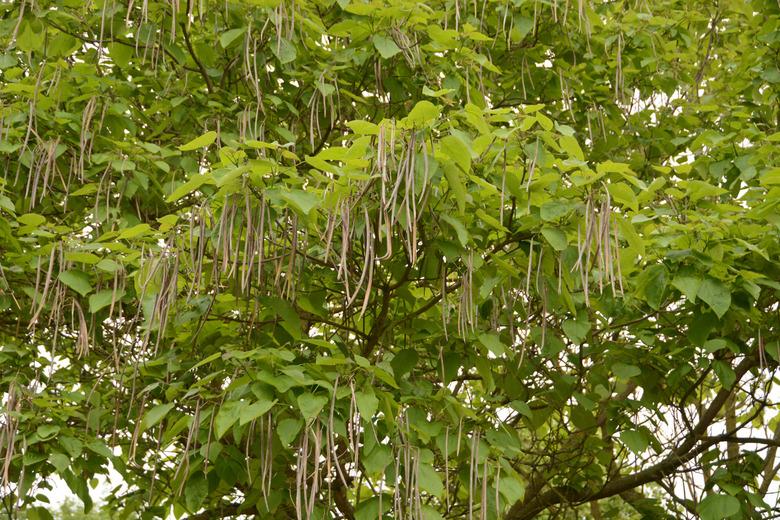Catalpa Cigar Tree
We may receive a commission on purchases made from links.
The catalpa tree (Catalpa speciosa) is a native tree with heart-shaped leaves and large clusters of showy, fragrant flowers. To top off its show, the tree produces unusual, cigar-shaped seed pods that hang on the bare branches through the winter. It is grown both as an ornamental and for the utility of its wood. It is hardy in U.S. Department of Agriculture plant hardiness zones 4 through 8.
Meet the Northern Catalpa
Meet the Northern Catalpa
The northern catalpa is a tree native to the United States Midwest. It is a medium-size tree, growing to between 40 and 60 feet tall. The narrow, rounded crown; gray bark; and spreading branches unite to make the tree extremely attractive.
The catalpa's large leaves, which are up to 12 inches long and 8 inches wide, are dark green and shaped like hearts. The fragrant flowers are bell-shaped and about 2 inches wide. They appear on the tips of branches in loose, upright panicles. Each flower is white with five frilly edged lobes, speckled or streaked with purple and orange.
The flowers are followed by the defining feature of the tree: its fruit. This appears as long, narrow capsules that are up to 14 inches long. Some think they resemble green beans, while others compare them to cigars. Each pod contains at least 100 winged seeds. The seeds are so small that to make up a pound, it takes over 20,000 seeds. The pods dry as they mature and split open to drop seeds.
Northern Catalpa Growing Environment
Northern Catalpa Growing Environment
In the wild, northern catalpa can be found growing near water along streams, rivers, and lakes from New England west to North Dakota and south to Texas. In addition to its native range, it is widely planted as an ornamental tree. It is often used for planting in urban areas along streets, and in the right environment, it can even become an invasive nuisance due to the prolific number of seeds produced in its beanlike pods. It's not difficult to propagate a tree from a seed.
The catalpa flowers appear in May and June. They are pollinated by bees, wasps, and flies. The fruits mature in autumn from September to October depending on the part of the country in which it is found.
Uses and Drawbacks
Uses and Drawbacks
While largely considered an ornamental tree today, the tree was initially grown for its wood. Catalpa wood is strong and resistant to rot. It is used for fence posts, railway fuel, and power poles. It was also used to make calligraphy paper openers and furniture.
The tree also had early medicinal uses. The beans were used to treat asthma and heart problems, the leaves were taken for eye problems and swollen lymph glands, and the bark was also used for swollen glands.
Although the catalpa tree is undeniably a beautiful tree, the primary drawback is the mess that it makes. It sheds its flowers in the early summer and its leaves in autumn, and in the winter, the dried bean pods drop and litter the lawn. It also has a relatively short season, being among the last deciduous tree to leaf out in spring and the first to shed.
